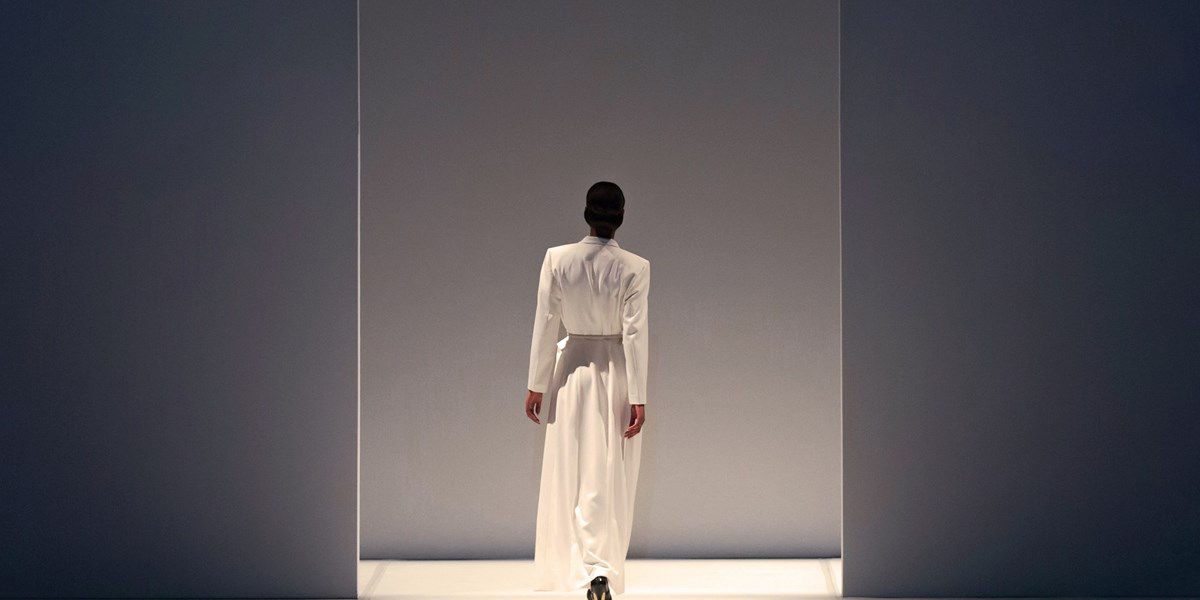Deputy Judge Forsyth has handed down the long-awaited (and hotly anticipated) judgment in WaterRower v Liking Limited. The judgment cuts to the heart of the apparent tension between the requirements for the subsistence of copyright in the EU, and those in the UK. It is the first judgment to grapple meaningfully with those differences since Brexit, and leaves us in a position in which - for the creators of industrial designs or applied art - the EU appears an increasingly important jurisdiction.
BACKGROUND
The purpose of copyright is - at its most broad - to protect creative works. In the UK, under the Copyright Designs and Patents Act (the “Act”), the classes of protectable creative works are limited to those set out at s1(1) of the Act as further defined at ss3-8. This has, in the past, meant that the bringing together of objects to be photographed for the cover of Oasis’s album Be Here Now was famously not protectable by copyright - it was not found to fall within the protectable classes of work.
Notably, in relation to artistic works, where a work is not a graphic work, photograph, sculpture or collage, or a work of architecture, it is only protectable by being a “work of artistic craftsmanship”. The meaning of “artistic craftsmanship” has been much litigated and never clearly defined but, broadly, is understood to exclude everyday mass produced products (which are likely to attract UK unregistered design right, and afforded a much shorter term of protection). The position of applied art, or more bespoke commercial offerings, is much less clear.
The EU has taken a different tack. In 2019, the CJEU’s Cofemel judgment, as refined in subsequent decisions of the EU’s top court, held that it was both necessary and sufficient for the subsistence of copyright for a work to be “original” in that it is the manifestation of its author’s intellectual expression[1]. In the EU there is - and can be - no additional requirement for copyright to subsist, and the EU therefore precludes the UK’s apparently closed list of works. It also, importantly, precludes the additional requirement placed by the UK on works of artistic craftsmanship.
This tension between the UK’s apparent need for a work to fall into particular classes, versus the EU’s “open” copyright, has always been discussed academically, but never came to a head during the UK’s membership of the EU. Since Brexit, however, the issue has now been litigated twice, and there is a good argument that there is not much more clarity than we had before.
Response Clothing v Edinburgh Woollen Mill [2020] EWHC 148 (IPEC)
In early 2020, prior to IP completion day for the purpose of Brexit, and comfortably prior to the Retained EU Law (Revocation and Reform) Act 2023 (“REULA”), HHJ Hacon handed down judgment in Response, a dispute about the subsistence and infringement of copyright in jumpers made of a jacquard fabric. The design was found not to be a graphic work, and the question was therefore asked whether it was a work of artistic craftsmanship.
On this point, HHJ Hacon found that - despite multiple decisions of the highest English Court on the subject - case law in England was not clear. He turned to a New Zealand decision, Bonz, for guidance, and found that a work would be of artistic craftsmanship if its creator (a) was a craftsman in that he or she created the work in a skilful way taking justified pride in the workmanship, and (b) was an artist in that he or she used creative ability to create something with aesthetic appeal. HHJ Hacon found that the creator of the work was a craftsman, and that the work was aesthetically pleasing. Notably, he did not consider the requirement under Bonz that the creator was an “artist”, or the means used to get to an aesthetically pleasing place.
HHJ Hacon considered the disjunct between UK and EU law on the point and accepted that EU law would preclude the additional requirements imposed upon works of artistic craftsmanship. However, he proceeded to conclude that the fabric in question did fall within the definition of artistic craftsmanship under Bonz, and that he therefore did not need to concern himself with that point. This judgment has been accused, in some quarters, of going to some length to avoid a difficult question, which would make that question all the more tricky for future judges, as indeed now appears to be the case.
WaterRower v Liking Limited [2024] EWHC 2806 (IPEC)
The above background, coupled with REULA which has since come into force and provides that, since the end of 2023, UK law is supreme over retained EU law, left Deputy Judge Forsyth in a somewhat unenviable position in handing down this judgment, which had to deal with infringement both before and after the entry into force of REULA.
The WaterRower is a high-end rowing machine, crafted from hardwoods, and incorporating a flywheel which uses water for resistance. It is a premium product, and has spawned a host of (alleged) copycats, of which one was made by Liking Limited. Originally fashioned in the 1980s, the WaterRower is out of time for other relevant IP protection (including in particular various forms of design right). It therefore relied on asserting copyright infringement, which required it to show that copyright subsists in its product as a work of artistic craftsmanship.
The Judge reviewed, in significant detail, the historic UK case law. While he acknowledged that the difficulty in the historic case law made it difficult to produce a binding list of factors for work to subsist as artistic craftsmanship, he did bring together 11 “threads” from past judgments, which are at paragraph 135 of his judgment and annexed to this article.
However, the Judge proceeded to conclude that while the creator of the WaterRower (a Mr Duke) was a craftsman, and while the WaterRower was aesthetically pleasing, Mr Duke was not an “artist” for the purpose of (b) of the Bonz test. This appears a deliberate decision on the Judge’s part not to take the same “easy” way out of making a decision on the conflict of laws taken by HHJ Hacon. Had the Judge followed Response in full, he could likely have found subsistence on the same basis.
Before the Judge could reach the above conclusion, however, he had to consider the effect of EU law. While, post-REULA, UK law is (in the UK) supreme, prior to REULA UK law had to be interpreted by reference to EU law so far as possible. The alleged infringements by Liking Limited extended prior to REULA, and the Judge therefore had to consider both circumstances. The Judge found, on this point, that HHJ Hacon had interpreted UK law as compatible with EU law “to a point” - that point being where a work was an artistic craftsmanship (so the question of the “closed list” became, essentially, irrelevant). Beyond that point, however, he found that UK law was incompatible with EU law. Under the Marleasing principle this would, when in the EU, have meant that input would have been needed from the UK legislature. Clearly, post-REULA, the UK law stands on its own.
TAKEAWAYS
There are a number of key points brought to light by this hotly anticipated judgment, both legal and commercial.
Commercially, as things stand the EU is clearly the better forum in which to litigate copyright in artistic works, beyond traditional artistic works such as graphic design, photography, sculpture, collage or architecture. In the UK, design-reliant businesses should consider alternative protection, including in particular registered and unregistered designs, but also non-traditional trade marks. A holistic IP strategy has significantly increased in importance. Where litigating, the value of a cross-jurisdictional and multi-right strategy has also increased.
Legally, this case appears ripe for appeal if WaterRower has the appetite. Post-Brexit, the UK needs legal clarity on this point, ideally from the legislature but failing that from a higher Court. It seems quite feasible that the Court of Appeal may find that - prior to REULA - UK law could be interpreted as compatible with EU law, and that its classes of protection ought to have been considered loosely at most. That said, post-REULA the position is clear, so such a judgment would create a position in which a long-sought clarification was finally made, but no longer relevant.
In summary, this may well not be the last we hear from the Courts on this point, and we can add it to the growing list of post-Brexit concerns which may require legislation. Meanwhile, designers would be well-advised to consider their IP portfolio across the breadth of rights in the UK.
ANNEX
- Parliament has created a distinction between copyright protection accorded to works within with CDPA s.4(1)(c) and the other artistic works under s.1. The former requires artistic quality, the latter do not.
- A work of artistic craftsmanship involves a medium that has been worked with craftsmanship, wherein the visual appearance involves artistic expression, which is not wholly constrained by functional constraints.
- The ordinary meaning of the statutory phrase requires no further formulation or judicial definition.
- The statutory phrase should be assessed as a whole.
- Copyright protects expression. The process of creating a work of artistic craftsmanship and the resulting work of artistic craftsmanship are intrinsically interrelated. The craftsmanship creating the work must be artistic; the work will be one of artistic craftsmanship.
- The court can rely on any evidence it views as relevant to assist it forming an objective view on the statutory question.
- The assessment is not one that requires any value "assessment of artistic merits or quality" in order to decide whether a work is one of artistic craftsmanship.
- Mass manufacture of the work does not preclude it from being a work of artistic craftsmanship. Neither do commercial aims or the involvement of technology or tools in the creation of the work.
- The author of the work can be multiple people provided there is a sufficient nexus.
- More than eye appeal is needed - visually appealing aesthetics will often be present in works of artistic craftsmanship but such evidence does not determine the underlying question of whether that work is one of an artist craftsman.
- It is the craftsmanship in the work that is relevant - not the qualification or training of the craftsman - although skill and training will assist in assessing the presence of craftsmanship.
[1] Copyright subsistence also requires that a work be fixed in a manner sufficiently clear and precise as to be objectively discernible, but that is not relevant here.






